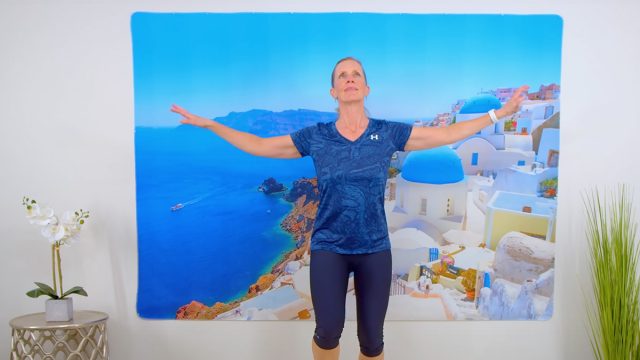25-Minute Walk to Burn Fat at Home
YouTuber Jules (Improved Health) is a recreation therapist, group fitness instructor, and senior fitness instructor—so naturally, she knows a thing or two about weight loss and fat-burning. "My goal is to create fun workouts for anyone who is looking for safe, manageable, and effective workouts," she says. Jules' workouts are great because not only are they effective, but they are accessible for practically everyone—no gym membership or equipment is needed. "This 25-minute HIIT walk at home workout is a sweaty walking/jogging/running workout," she says. "Go at your own pace! If you want to walk the whole time, you can! The pace can be determined by what you can do and by what you want to get out of the workout. We'll take breaks at different periods during the workout (but you can push through the breaks if you want). This workout is great for fat-burning, calorie burning, and for transforming fitness." Read on to find out more.
At-Home HIIT Workout
Jules' HIIT workout breaks down as follows:
- 5-minute warm-up
- 15-minute intervals
- 5-minute cool down
Warm-Up Section
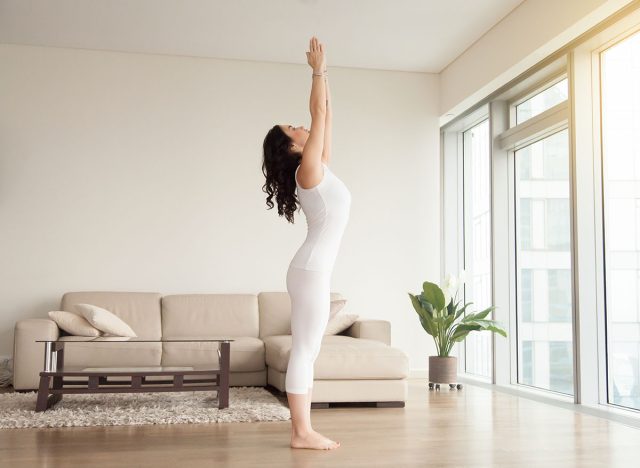
The warm-up section consists of 5 minutes of changing exercises every 30 seconds. Then going into 15-second intervals.
Interval Section
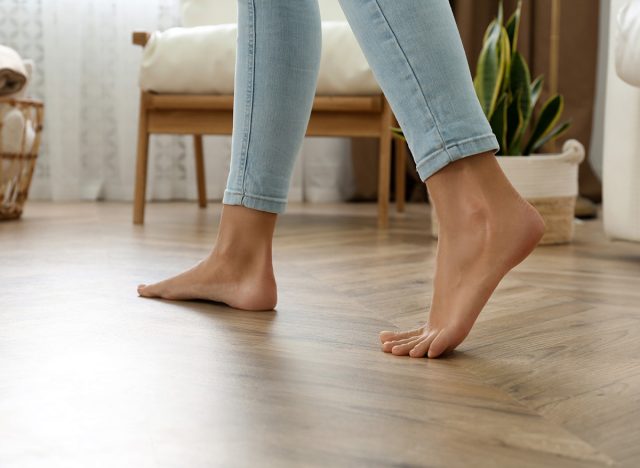
The intervals are in 3 stages, Jules says.
- 1st 15 seconds: Slow walk
- 2nd 15 seconds: Fast walk
- 3rd 15 seconds: Your fastest pace
Cool Down Section
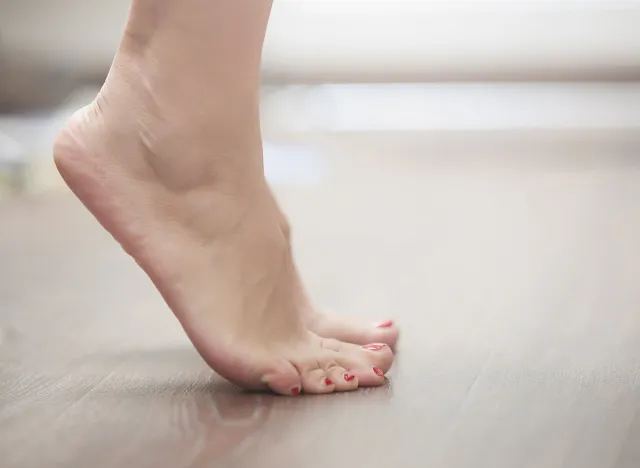
The goal now is to get the heart rate down for the next 5 minutes, Jules says. She says to switch up the leading foot.
Finish Up With Stretching
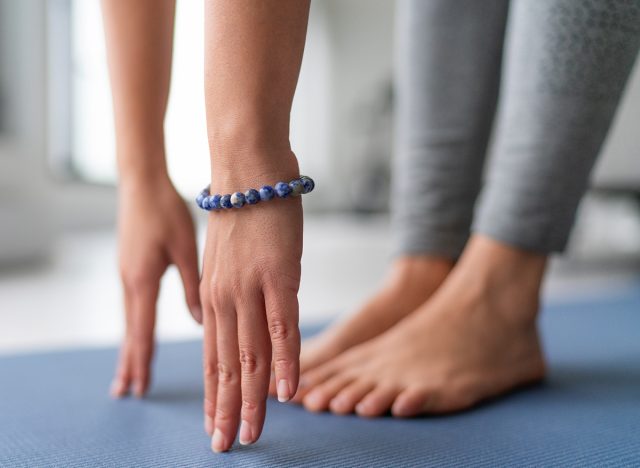
Jules stretches to finish off the workout. If you want to work on balance, raise the opposite arm up, she says.
RELATED: Top 15 Morning Foods You Should Eat Every Day
Results!
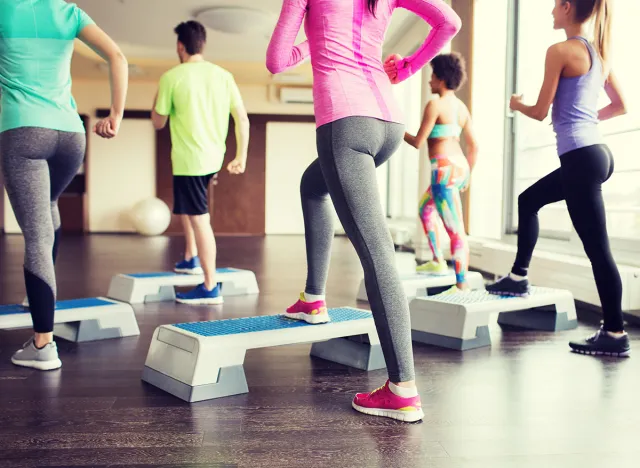
According to Jules, you should hit around 3139 steps during this workout. Your step count will vary depending on your pace, she says. She finishes the video on a positive, inspiring note. "Strength and growth come only through continuous effort," she says. "Just keep going. Everybody gets better if they keep at it."
HIIT Benefits
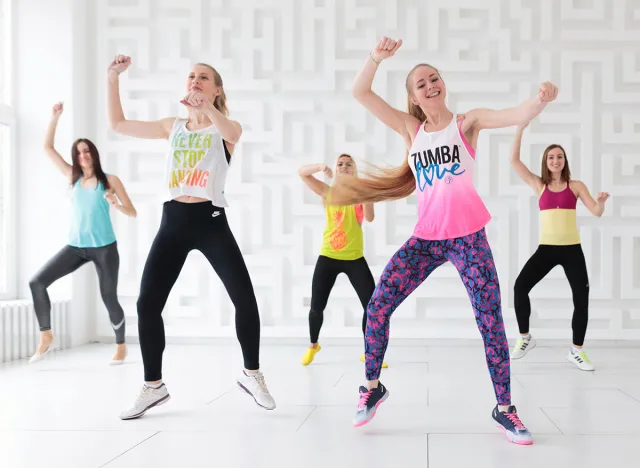
HIIT as many benefits for fitness and fat-burning. "HIIT and other high-intensity exercise programs help you burn a lot of calories in a short amount of time," says UC Davis. "Research has also shown that you keep burning calories for hours after your workout is finished. These workouts typically cause you to burn more fat and build muscle. Studies have also shown that high-intensity workouts may help lower blood pressure and heart rate."
Calorie Burn
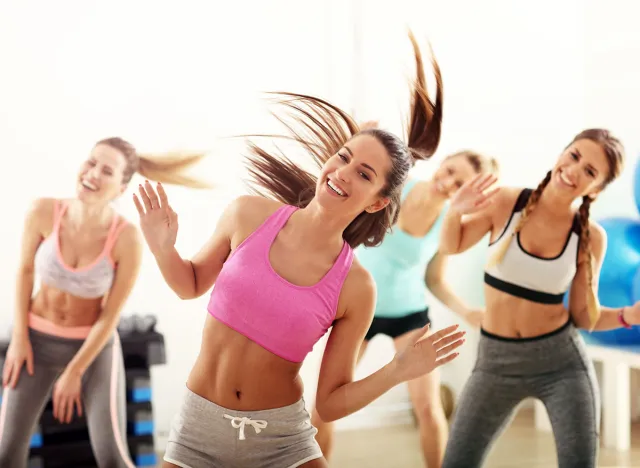
HIIT workouts are effective for calorie burn. "Shorter and more intense bursts of exercise can burn more calories than a slow-and-steady workout," says the Cleveland Clinic. "An added perk? It takes less time, which is always a plus in a world with jam-packed schedules."
Talk To your Doc

Always talk to your doctor before starting a new exercise routine. "HIIT is a great regimen for people who are young and healthy. If you're older or have heart disease, check with your doctor before trying it," says Dr. I-Min Lee, professor of medicine at Harvard Medical School.
Body Fat and Blood Sugar
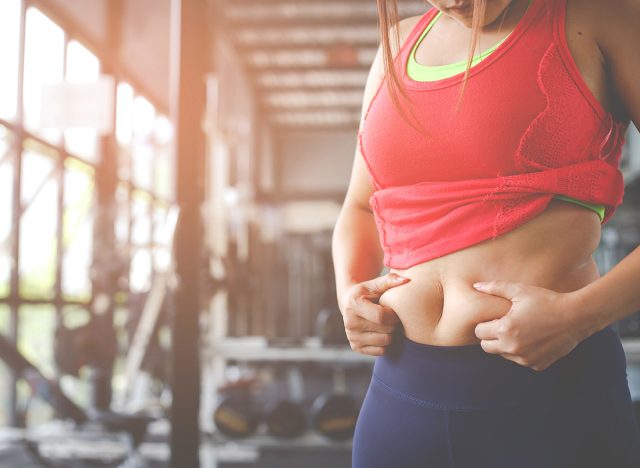
HIIT is an effective way to burn fat and support healthy blood sugar levels. "HIIT can help you lose body fat, especially if you have obesity," says the Cleveland Clinic. "Study after study shows that HIIT can reduce blood sugar and improve insulin resistance, making it an ideal option for those with Type 2 diabetes or prediabetes." And if you enjoyed this article, don't miss 12-3-30 Walking Method: 20 Proven Tips to Lose Weight Faster.
